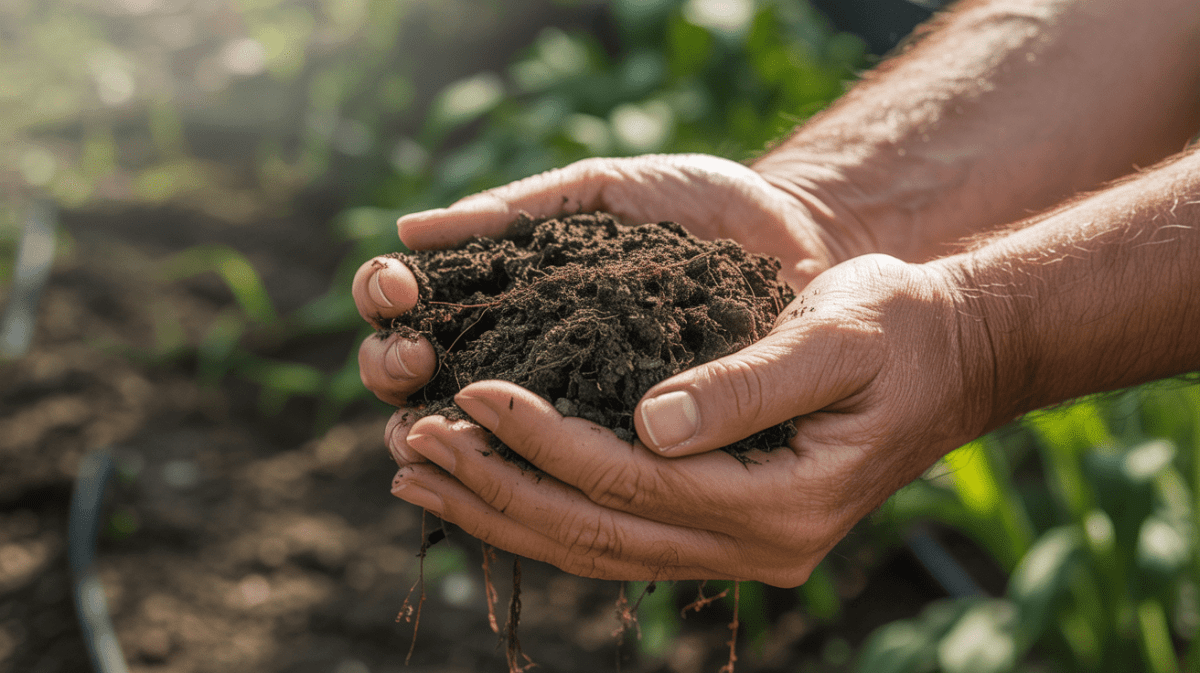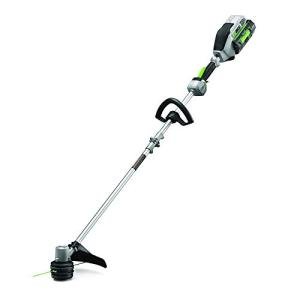Simple tips to boost your lawn's health and beauty:

Improving Your Soil pH and Nitrogen Levels
I know how key soil health management is for a good harvest. Maintaining optimal soil conditions is crucial for plants to thrive, and I'm here to help you learn how to achieve this.
Most plants thrive best in slightly acidic to neutral soil pH, ranging from 6.0 to 7.0. They also need enough nitrogen. Knowing how to improve soil fertility is crucial for this balance.
By testing your soil and identifying any imbalances, you can adjust its pH and nitrogen levels, which will enhance your plants' growth.
Key Takeaways
-
Understand the importance of soil health management
-
Test your soil to determine its pH and nitrogen levels
-
Identify signs of imbalance in your soil's pH and nitrogen levels
-
Take steps to adjust your soil's pH and nitrogen levels
-
Create a more favorable environment for plant growth
Understanding Soil Health Fundamentals
Understanding the basics of soil health is crucial for cultivating a healthy garden. Soil health encompasses various factors, including pH levels and nutrient availability.
What Soil pH Really Means
Soil pH indicates the acidity or alkalinity of the soil. This significantly impacts how plants utilize nutrients. If the pH level is off, plants cannot absorb the nutrients they need, which hinders their growth.
The Critical Role of Nitrogen in Plant Growth
Nitrogen is essential for plant growth. It helps make leaves, stems, and roots. It's also part of amino acids and chlorophyll, vital for photosynthesis and plant health.
How pH and Nitrogen Interact in Soil
The relationship between pH and nitrogen is intricate. Different types of nitrogen work better at certain pH levels. For example, ammonium nitrogen is most effective in acidic soils, while nitrate nitrogen performs better in neutral to alkaline soils. Knowing this helps with soil nutrient management.
Understanding these basics enables you to make informed choices for your soil's pH and nitrogen levels, thereby creating a more favorable environment for your plants to grow.
Testing Your Soil's Current Condition
Checking your soil's health is the first step to a fertile garden. You need to test it to know its pH and nitrogen levels.
DIY Soil Testing Methods
DIY soil testing kits are a quick and easy option. They include pH test strips and sometimes nitrogen tests, but their accuracy can be variable.
DIY soil testing is a good start, but be aware of its limitations.
Professional Soil Testing Services
For a detailed look, get professional soil testing. They offer detailed reports on pH, nitrogen, and nutrients, and their advanced tools give more precise results.
Interpreting Your Soil Test Results
Understanding your soil test results is key. Here's a simple guide:
Knowing your soil test results helps you make informed adjustments to your soil's pH and nitrogen levels.
Identifying Signs of pH Imbalance and Nitrogen Deficiency
Knowing the signs of pH imbalance and nitrogen deficiency in your soil is important. This helps keep your plants healthy. Plants show signs when their soil's pH or nitrogen levels are off.
Visual Plant Indicators of pH Problems
Plants can reveal a great deal about soil pH. For example, chlorosis, or yellow leaves, can mean the pH is too high or too low. Some plants are more sensitive to pH, making them effective indicators of soil health, such as hydrangeas, which display their soil pH through changes in flower color.
Recognizing Nitrogen Deficiency Symptoms
Nitrogen deficiency, mainly in young plants, appears as stunted growth or yellowing leaves. Nitrogen is crucial for leaf growth and the production of chlorophyll. Without enough nitrogen, plants can't photosynthesize well.
Soil Appearance and Texture Clues
The soil's look and feel can also indicate its pH and nitrogen levels. Soils with lots of organic matter are often more acidic and darker. Very alkaline soils may appear whitish due to the presence of calcium carbonate. Checking the soil's texture and color can help you understand its condition.
Methods for Adjusting Soil pH Levels
Adjusting the soil pH is key to creating a suitable growing environment for plants. Soil pH significantly impacts nutrient use, microbial activity, and root health, making it vital to match the soil pH to your plants' specific needs.
Raising pH in Acidic Soils
Several methods are effective in correcting soils that are too acidic. One common method is the use of lime application.
Lime Application Techniques
Lime is a great way to raise soil pH. The right lime type and amount depend on soil type and pH. Based on soil magnesium levels, choose between calcitic lime and dolomitic lime.
Wood Ash and Other Natural Alkaline Amendments
Wood ash and other alkaline materials can also raise pH. But, use them carefully to avoid over-correcting.
Lowering pH in Alkaline Soils
For soils that are too alkaline, different methods are used to lower the pH.
Sulfur-Based Solutions
Sulfur-based amendments are top choices for lowering pH. Elemental sulfur and aluminum sulfate are effective, depending on the soil type and the desired change.
Organic Matter for Gradual pH Reduction
Adding organic matter can also lower pH over time. Peat moss and compost help create a more acidic environment.
Improving Soil pH and Nitrogen Levels Simultaneously
To make soil more fertile, we need to address two main factors: adjusting pH levels and increasing nitrogen levels. We can achieve this through the use of organic amendments, cover cropping, and composting.
Organic Amendments That Address Both Issues
Organic amendments are crucial for maintaining a better soil pH and improving nitrogen levels. For example, adding compost or manure can adjust the pH and provide additional nitrogen. Here are some organic amendments that help balance both:
-
Compost contains nutrients and microbes, which stabilize soil pH and boost nitrogen levels.
-
Manure is great for improving soil fertility by adjusting pH levels and adding nitrogen.
-
Peat Moss: Peat moss lowers pH and improves soil structure for acidic soils.
Cover Cropping Strategies
Cover cropping is an excellent way to maintain healthy. Soil It helps with both pH and nitrogen levels. Here are some cover cropping strategies:
-
Legumes, such as clover or beans, fix nitrogen from the air, thereby improving soil nitrogen levels.
-
Grasses help stabilize soil and improve its structure, which in turn affects the soil's pH.
Composting Techniques for Balanced Soil
Composting is a strong way to make balanced soil. It turns organic materials into a nutrient-rich amendment. Here are some composting techniques:
-
Aerobic Composting: This method involves turning the compost pile to ensure sufficient oxygen, resulting in nutrient-rich compost.
-
Vermicomposting: Using worms to compost organic materials produces high-quality compost rich in nutrients.
By employing these strategies, you can enhance the health of your soil, creating a more balanced and fertile growing environment.
Nitrogen Enhancement Strategies
Boosting nitrogen in the soil helps plants grow more vigorously and maintains the soil's health. Nitrogen is crucial for plant growth, affecting crop yields and soil fertility.
Organic Nitrogen Sources
Adding nitrogen from organic sources is good for the environment. Compost, manure, and green manure add nitrogen and enhance soil quality.
Compost and Manure Applications
Compost and manure are rich in nitrogen and other essential nutrients. Adding them to the soil makes it more fertile. Compost can be made from kitchen waste, and animal manure is a great source of nitrogen.
Green Manures and Nitrogen-Fixing Plants
Green manures, such as legumes, are cultivated to replenish the soil's nitrogen. Plants like beans and peas can convert atmospheric nitrogen into a form that they can utilize.
Synthetic Fertilizer Options
Synthetic fertilizers are quick fixes for nitrogen needs. Knowing the types of synthetic fertilizers is important for using them correctly.
Slow-Release vs. Quick-Release Formulations
Synthetic fertilizers are either slow-release or quick-release. Slow-release fertilizers release nitrogen over time, requiring less frequent application. Quick-release fertilizers work quickly but may require more frequent applications.
Application Timing and Methods
When and how you apply fertilizers matters a lot. It's essential to apply at the right time for plants and in a manner that doesn't harm the environment.
Common Mistakes to Avoid When Amending Soil
Understanding and avoiding common mistakes is key to successful soil amendment. This process is vital for healthy plant growth, but it can go awry if not performed correctly. Knowing the pitfalls helps gardeners maintain fertile and plant-friendly. soil
Over-Application of Amendments
One big mistake is over-applying amendments. Too many nutrients can harm plants as much as neglecting them. Always follow the recommended amounts and watch how plants react.
Ignoring Regional Soil Differences
Regional soil differences are crucial. What works in one area might not work in another. This is due to the varying soil types, climates, and plant species. Understanding these differences is crucial for effective soil amendment.
Neglecting Seasonal Timing Considerations
Seasonal timing matters a lot. Applying amendments at the wrong time can fail or even harm plants. For example, using nitrogen-rich fertilizers at the wrong season can lead to weak growth and disease.
Failing to Retest After Treatment
After amending, it's important to retest the soil. This checks if the amendments worked as planned. It also helps plan for future amendments. Here are important things to check:
-
Soil pH levels
-
Nitrogen content
-
Other nutrient levels
Conclusion
Improving soil pH and nitrogen levels is key for healthy plant growth. Knowing your soil's condition helps you identify and correct any imbalances. This way, you can make your soil better.
This guide has explored various methods to enhance soil health. These include testing, using organic amendments, cover cropping, and composting. These methods help make soil fertile and structured, leading to better harvests.
Optimizing soil fertility and implementing sustainable soil management practices benefits both your crops and the environment. By checking and adjusting your soil's pH and nitrogen levels, you'll get closer to achieving a healthy soil, which will reward you with great harvests.
By following these tips and improving soil pH and nitrogen levels, you'll have a thriving garden that provides you with plenty of food for years.
FAQ
Q: What is the ideal soil pH for most plants?
A: Most plants do best in slightly acidic to neutral soil, with a pH of 6.0 to 7.0. But, some plants need different pH levels. Therefore, determining the optimal pH for your specific plants is crucial.
Q: How do I know if my soil is nitrogen-deficient?
A: Signs of nitrogen deficiency include yellow or pale leaves, slow growth, and lower yields. You can test your soil to see its nitrogen levels. If unsure, ask a soil expert or a local nursery for help.
Q: Can I use lime to raise my soil's pH?
A: Yes, lime can raise your soil's pH. But it's important to test your soil first. Too much lime can harm your soil's health.
Q: What are some organic ways to improve soil nitrogen levels?
A: Organic nitrogen boosters include compost, manure, or green manure. Cover cropping and crop rotation also help improve nitrogen levels.
Q: How often should I test my soil after amending it?
A: Test your soil after amending it to see if it worked. How often you test depends on the amendments and your soil's start. Testing every few months is a good rule.
Q: Can I use synthetic fertilizers to improve soil nitrogen levels?
A: Yes, synthetic fertilizers can quickly fix nitrogen issues. But use them carefully to avoid harming plants and the environment.
Q: How do I avoid over-applying amendments to my soil?
A: Avoid over-applying by testing your soil first and following the recommended amounts. Watch your soil's condition and adjust your strategy as needed.
Q: What are some common mistakes to avoid when adjusting soil pH?
A: Mistakes include over-applying amendments and ignoring regional soil differences. Also, don't forget to retest your soil after adjusting pH.
Q: Can cover cropping help improve soil pH and nitrogen levels?
A: Yes, cover cropping can improve soil pH and nitrogen. It adds organic matter, reduces erosion, and attracts beneficial insects, helping your soil ecosystem.
Q: How does composting help improve soil health?
A: Composting adds organic matter, improves soil structure, and provides nutrients like nitrogen. It also helps balance soil pH and supports beneficial microbes.
Worx Landroid L Robotic Lawn Mower 20V
Take the hassle out of mowing with this smart, easy-to-use robotic mower that keeps your lawn looking pristine
Product information
$1,249.03
Product Review Score
4.72 out of 5 stars
22 reviewsProduct links
Husqvarna 61" Zero Turn Riding Mower 24 HP
Experience powerful mowing with precision handling for a beautifully manicured lawn
Product information
$6,435.00
Product Review Score
4.19 out of 5 stars
79 reviewsProduct links
DISCLAIMER
This document is provided for general information purposes only and should not be relied upon as providing legal advice, technical, or specific operational guidance to the reader, whether as to the practices described in the document or the applicable legal requirements and regulations. Lawnfly.com expressly disclaims any responsibility for liability arising from or related to the use or misuse of any information in this document.









